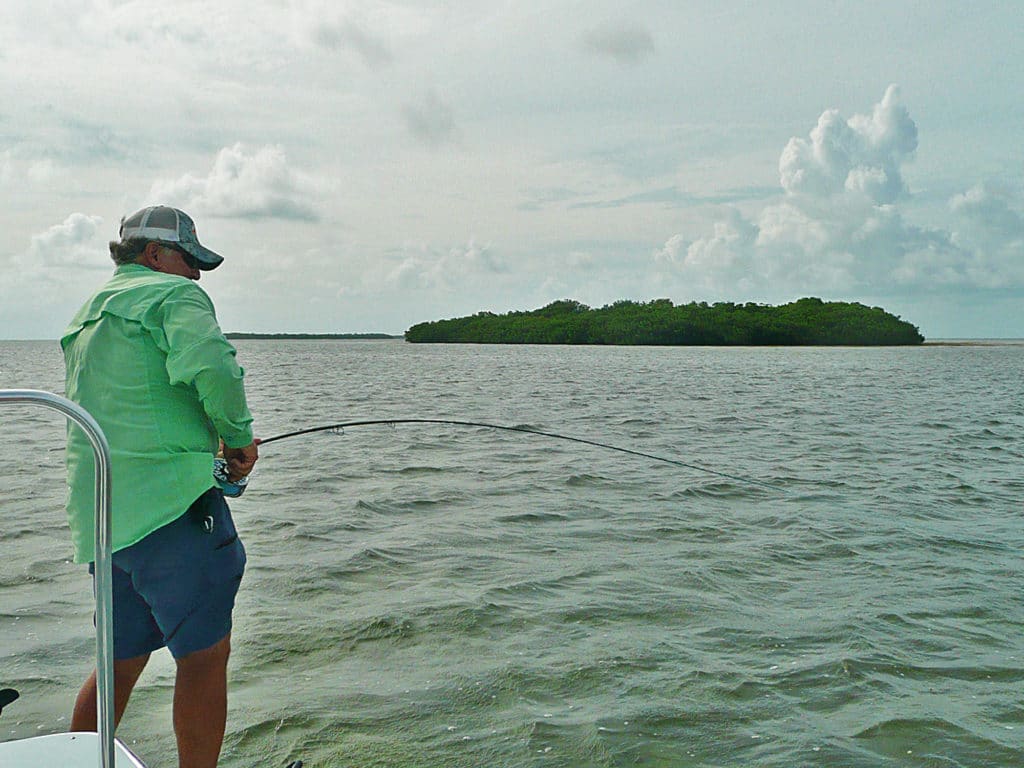
Top 10 Flies Every Angler Should Carry
At times game fish will eat just about anything that won’t eat them first, but there are many occasions when only flies that resemble the forage prevalent at a particular location and time will warrant strikes.
Though it’s difficult to know ahead of time what baitfish or crustacean your fly must imitate for you to get in on the action, especially when fishing away from your home waters, there are some tried and true fly patterns that seem to catch fish wherever you put them to use. Here are 10 of those venerable flies that have consistently proven their effectiveness all around the globe.
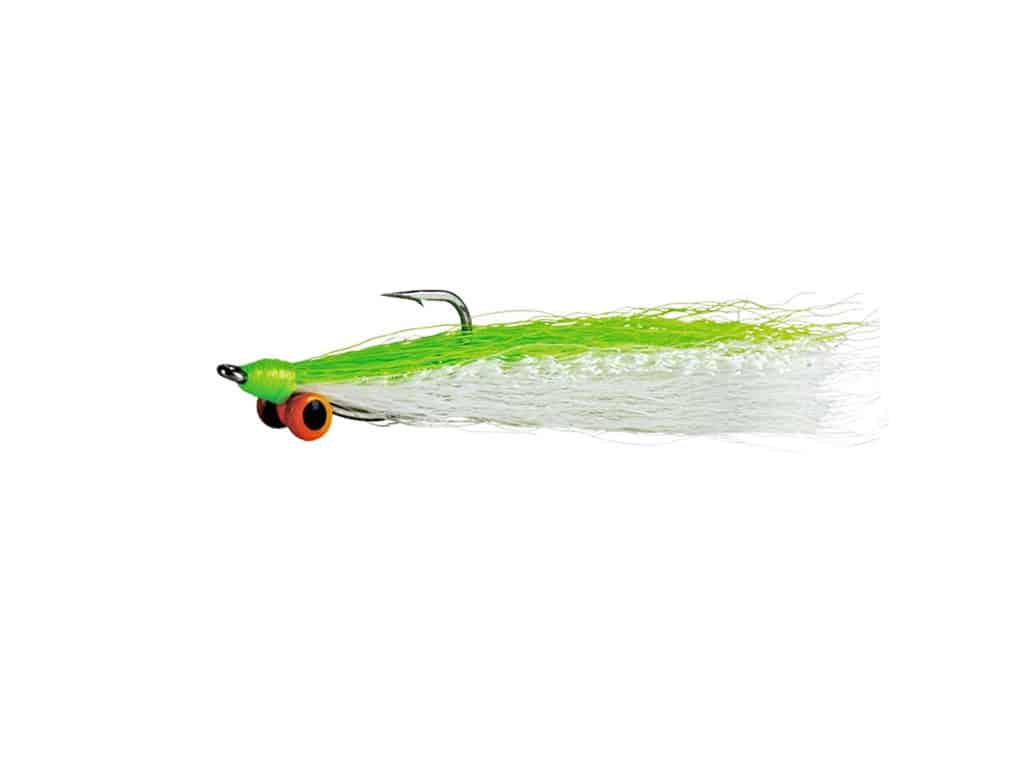
Clouser Deep Minnow
Bob Clouser designed this one for smallmouth bass in 1985, but countless fly fishers have since taken dozens of saltwater species on it. Its standard dumbbell lead eyes make then fly sink like a jig, and the pattern can be tied with bead-chain eyes instead for a slower sink rate. The Clouser sinks best when tied sparsely with bucktail or any of the many synthetic wing materials available. The productive color combinations are many, but the pattern is always the same – a dark back over a light-color belly.
Lately, fly anglers who target toothy species, such as bluefish and Spanish mackerel, are opting for long-shank hooks and tying the head of the Clouser just ahead of the bend of the hook to prevent the fish from cutting the leader to which the fly is attached.
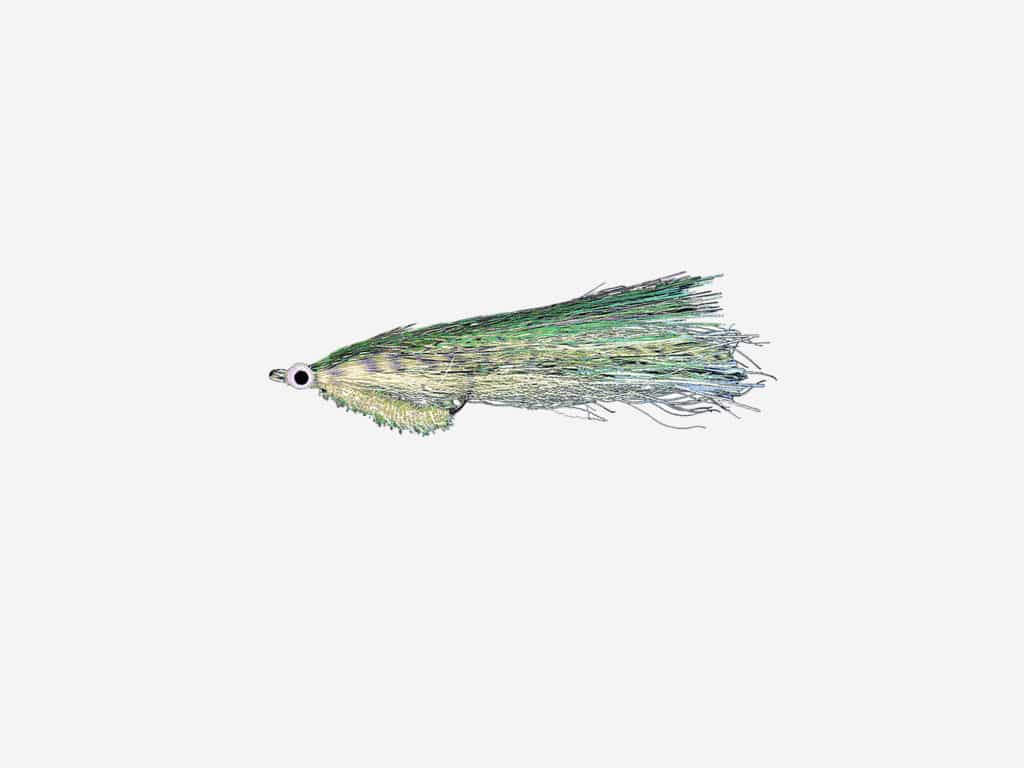
Bendback
The name Bendback actually refers to a style of tying rather than a specific pattern. The hook shank is bent back slightly and the wing is tied facing the gap of the hook so that it covers the hook point. The location of the wing and the offset shank, which remains exposed and hangs down, acting as a keel, make the hook point face upward as the fly moves through the water, making the pattern fairly weedless.
Depending on the colors and combinations of materials, you can tie this to imitate baitfish or shrimp. But always avoid bending the hook shank too deeply when you are getting ready to tie this fly, otherwise the wing will not cover the hook point well, and the angle of the point will make it harder to set the hook.
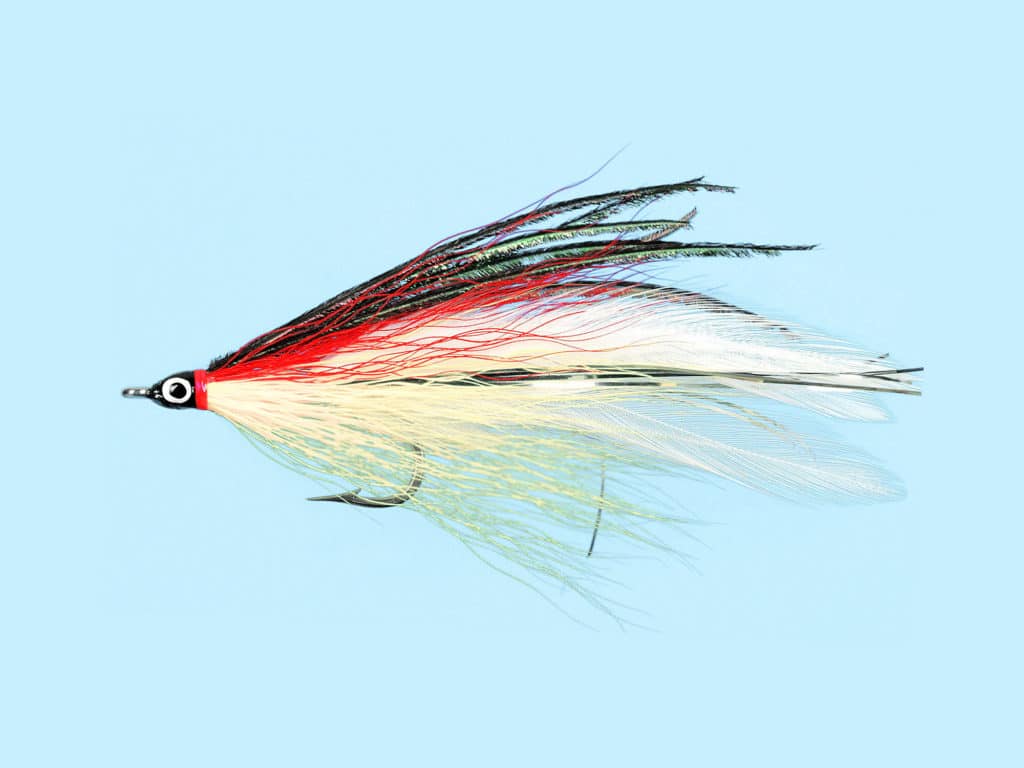
Lefty’s Deceiver
This famous pattern is the number one choice for many fly fishers. Lefty Kreh came up with it in the late 1950s after the feathers on other streamers keep fouling around the hook, spoiling the presentation to striped bass. Its hair collar blends into a hackle tail, creating a baitfish shape that “blooms” and swims seductively, yet on the pickup to recast, it becomes sleek, producing little resistance as it shoots through the air.
Color combinations run the gamut, and flash can be added if desired. Add an oversized eyes to this fly, and allow the adhesive you use to attach the eyes to bleed into the front of the wing. Squeeze the eyes into place to “flare” the wing materials a bit. Once cured, the fly will hold a wider profile in the water.
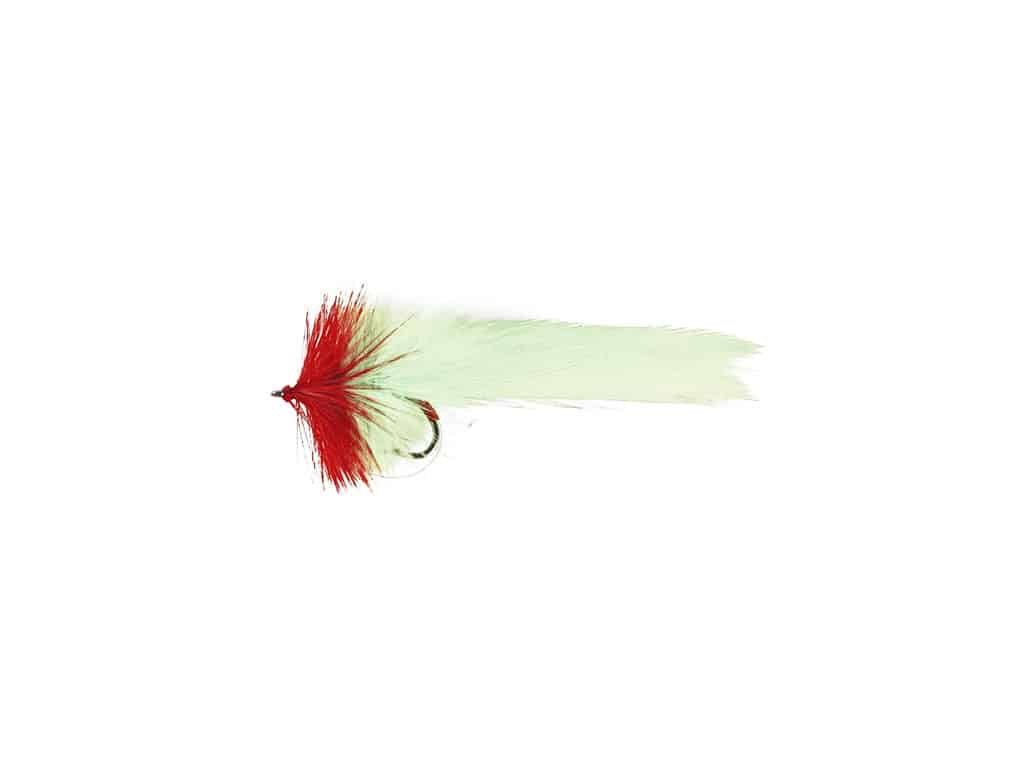
Seaducer
Chico Fernandez came up with this name, but the fly was originally known as the Homer Rhode streamer. Rhode used it for snook in the 1940s. This all-hackle pattern excels in shallow water due to the buoyancy of its palmered hackle head. It also undulates seductively in the current with very little stripping. It’s ideal for what I refer to as “short strike zones,” like flats potholes or shoreline pockets where fish lie in ambush.
Like most great flies, the Seaducer can be tied in color combinations that imitate baitfish or crustacean. With an oversized head, it looks likes a bit like crab. It’s great fished at the surface, and can be presented with a sinking line when dredging deeper water. Adding a mono weed guard is a good idea when fishing shoreline cover. If trying to imitate shrimp, add a webby, wide grizzly hackle on each side. This feather suggests a segmented body like that of a shrimp.
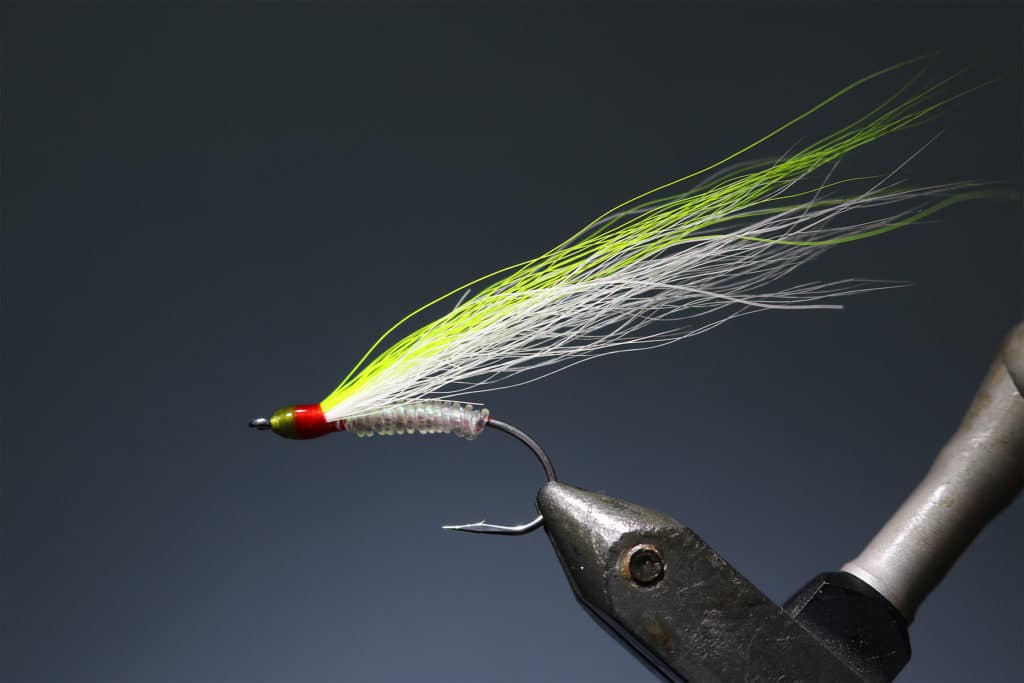
Glass Minnow
This fly has many versions, since there are so many types of marine minnows. Generally, it is tied sparsely and small on hooks ranging from No. 6 to 2. Pearl or silver flash is wrapped around the hook shank, which is then wrapped with clear monofilament or V-rib. A sparse translucent wing, with or without minimal flash (such as one strand of silver Flashabou on each side of the wing) completes it. Some tiers prefer a long shank hook for this pattern.
When fishing in a school of minnows, try using a version of this fly in something other then all white or green-over-white. An all chartreuse version, for instance, often gets more strikes.
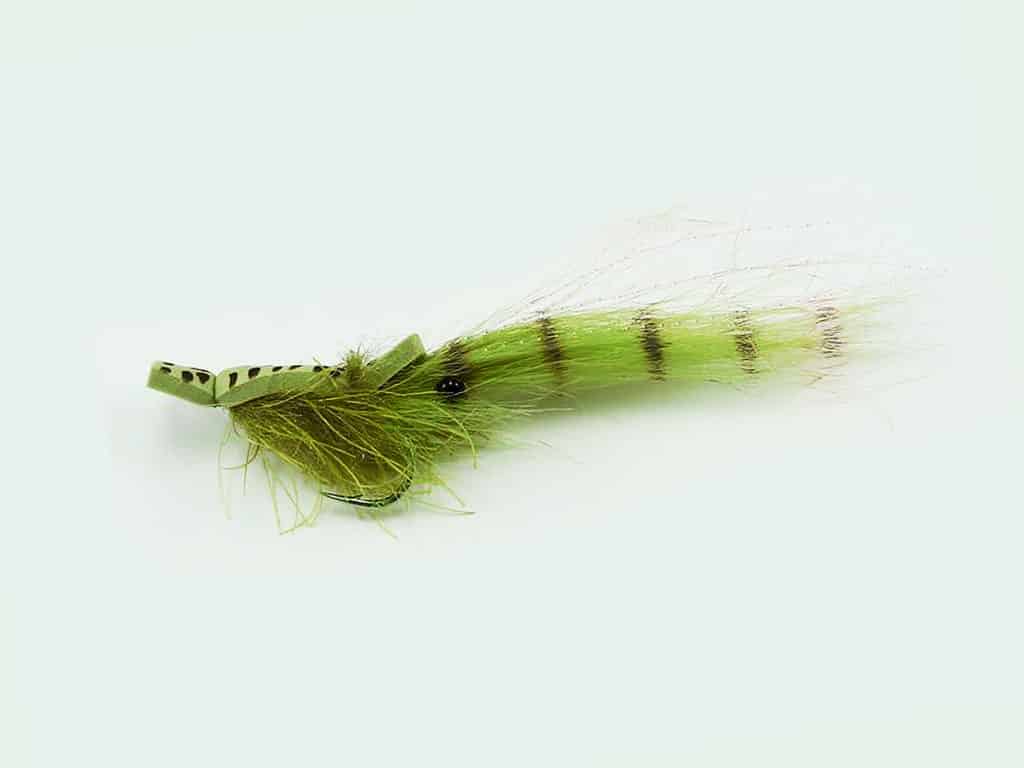
Gurgler
Originally known as the Gartside Gurgler, this streamlined foam-body popper was designed by the late Jack Gartside about 25 years ago. A foam strip is propped up at the head to form a lip that produces a “gurgling” sound, imitating either struggling baitfish or skipping shrimp at the surface. It is much easier to cast than a typical hard-bodied popper with a large concave face. The profile can be increased with a longer tail. The longer and stiffer the tail the better the fly seems to cast.
Overall length ranges from 2 to as much as 6 inches, tied on a standard or 2X long-shank hook in sizes 2 through 2/0. One foam body strip can be tied in on small flies, and two of them stacked together works best on bigger versions.
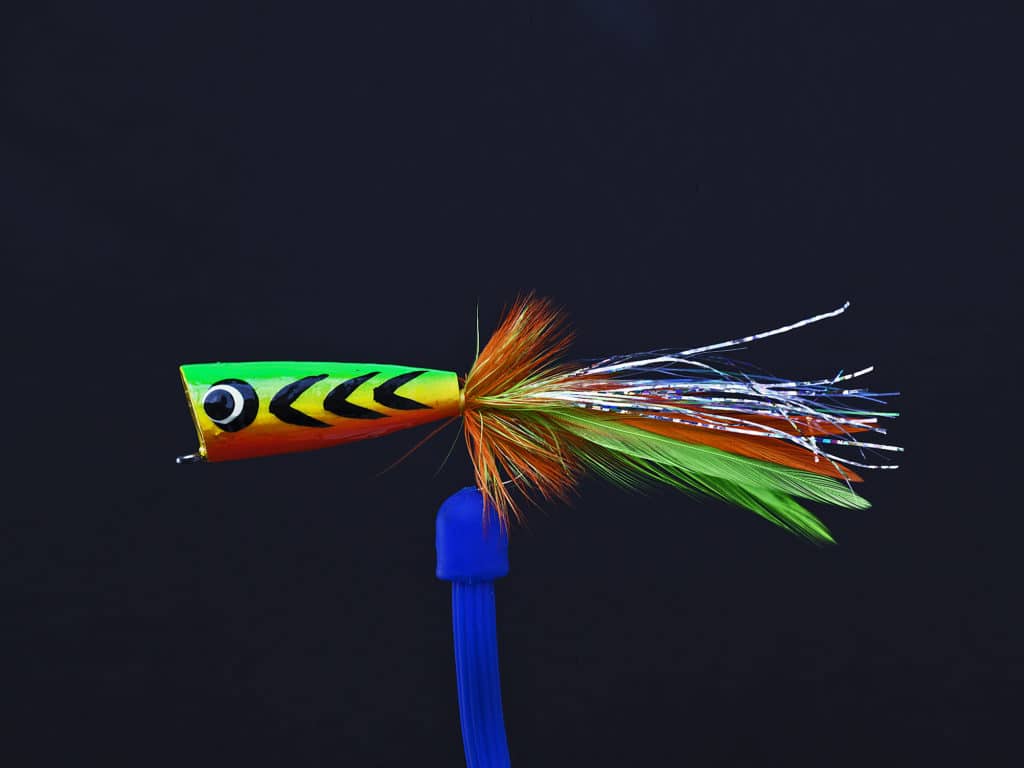
Hard-bodied Popper
Most fly fishers use either closed-cell or cork bodies, with tails made of stiff deer hair or neck hackles splayed outward. Poppers, thanks to the splash and noise they create, are superb at calling fish from a distance and producing reaction strikes. To cast a hard-bodied popper, it helps to use a saltwater taper fly line with a short, aggressive front head. Most saltwater taper lines have this configuration.
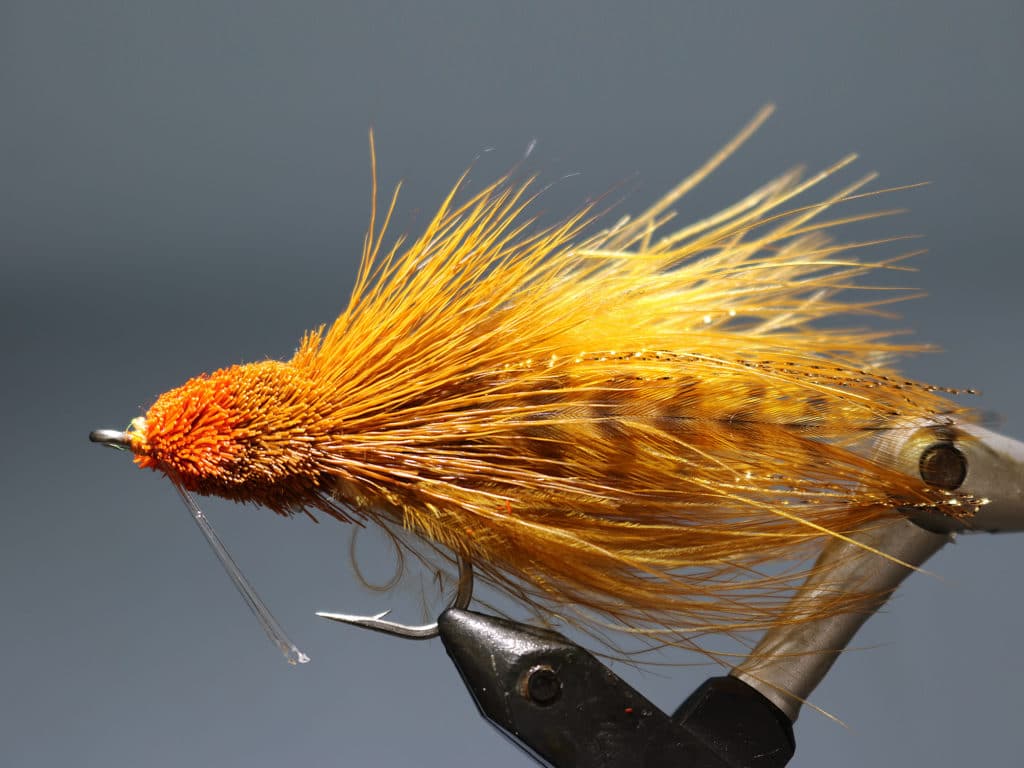
Marabou Muddler
A terrific “pusher” fly for fishing just under the surface in shallow water, or for dredging in deeper water. It presents a big profile, can be tied in any color, and, though it floats at first due to the spun deer hair used to shape the head, it soon absorbs enough water to swim enticingly subsurface.
The marabou tufts lend a lot of movement to this pattern, which is typically fitted with a mono weed guard to fish tight against shoreline cover. Suescun’s Konehead and the popular Dahlberg Diver are derivatives of this fly.
Tie in two traces of mono with the ends burnt at the rear (pointing aft) to simulate crustacean eyes and give this fly a “shrimpy” appearance.
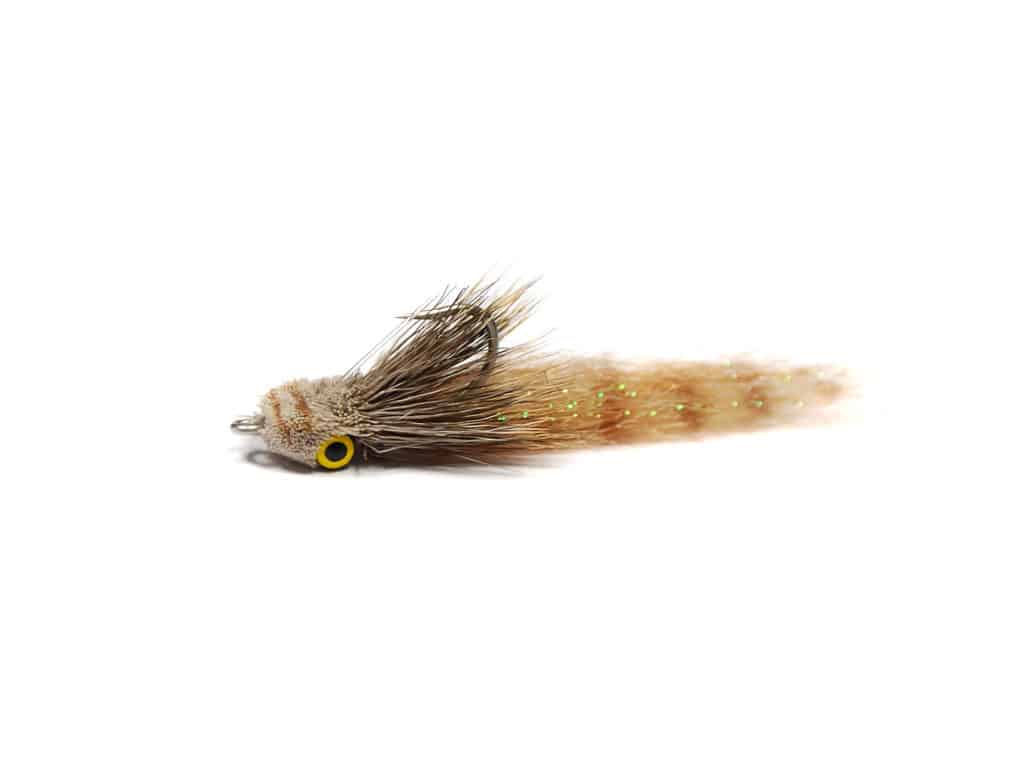
Borski Bonefish Slider
Talented Florida Keys fly designer Tim Borski designed this one for big Keys bones, but in my opinion, it is an all-round fish catcher. Fish take it for a baitfish (such as a goby or blennie) or a shrimp. I’ve taken bones, redfish, snook, seatrout, tripletail, mangrove snapper, and many others on it.
It’s mostly tied on hooks ranging in size from No. 4 through 1, with lead eyes, bead chain eyes, or very light mono eyes, depending on water depth. It rides hook up, but add a weedguard where especially grassy. Earth tones seem to work best, with perhaps some orange, chartreuse or even hot pink mixed into the wing.
Over bare mud, try stripping the fly with long draws on line to make it “plow” through the bottom, instead of using short hops. That drives fish crazy!
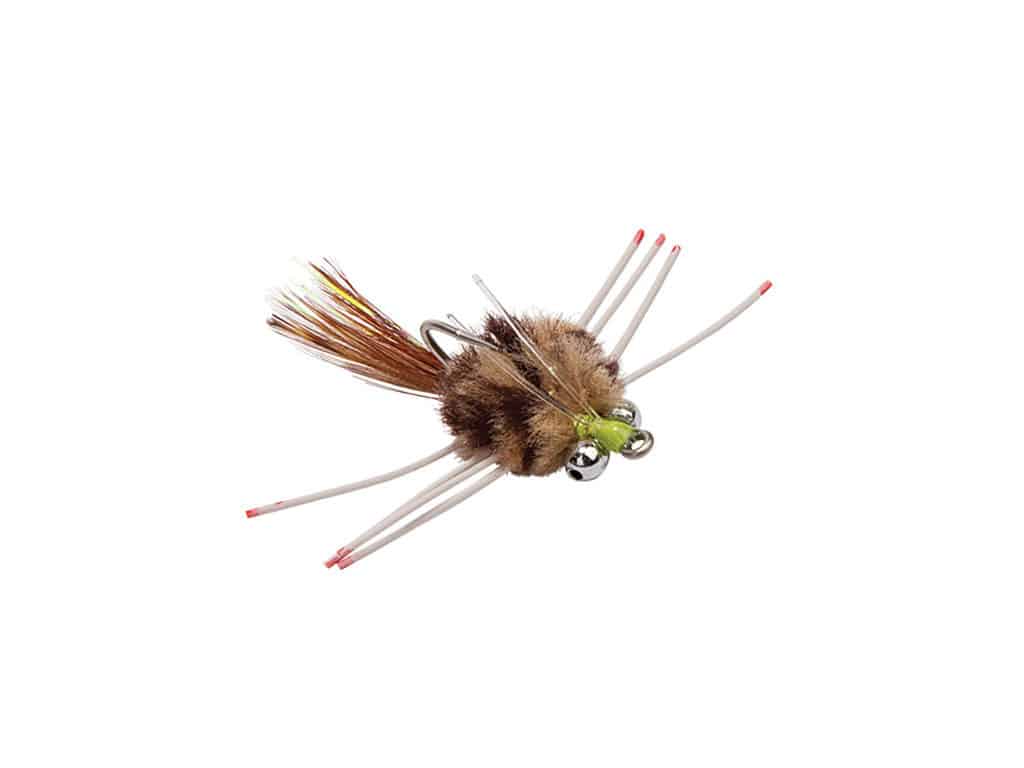
Crab Fly
I don’t have one favorite pattern here, but Del’s Merkin, Borski Critter Crab, Kung Fu Crab and Velcro Crab are all excellent imitations that catch a variety of species that feed on the crustaceans. The Merkin takes permit, big bonefish, redfish, and is particularly good on tripletail. The Kung Fu has undulating claws that wave in the current, making it a good one to leave still on bottom after a fish follows. The Critter Crab tied on a No. 4 or 2 hook ranks among the best bonefish and redfish flies around.
The Velcro Crab is the simplest to tie. Just tie in the tail, place a few rubber legs between two pre-glued, Velcro buttons and press them together! For surface fishing, particularly at night, it is tough to beat a rudimentary spun deer hair crab pattern.
When a fish tracks a crab fly, either on the flats or at the surface in deeper water, stop stripping and let it drop. If the fish stops, it probably ate the fly, so set the hook!









